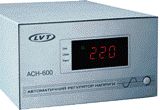Regulation of electricity
 What is a voltage stabilizer and why is the popularity of this equipment for the power industry not only not losing its relevance over time, but also in great demand in the market? Actually, the question is not simple and therefore requires a little explanation. From the point of view of theory, everything is simple: voltage stabilizers adjust the generated or transmitted current through electrical networks to a level that suits the average person.
What is a voltage stabilizer and why is the popularity of this equipment for the power industry not only not losing its relevance over time, but also in great demand in the market? Actually, the question is not simple and therefore requires a little explanation. From the point of view of theory, everything is simple: voltage stabilizers adjust the generated or transmitted current through electrical networks to a level that suits the average person.
The requirements that the electric current must meet are as follows: a voltage of about 220 V, fluctuations are possible with 10% of the nominal value, while the frequency of the current must be 50 Hz, the error is no more than 0.4 Hz in each direction. The fact is that modern equipment is designed for such current indicators, which means that at other values the appliances will burn out at best. This applies not only to household appliances - refrigerators, washing machines or computers, but also to serious industrial equipment.
The so-called "surges" of voltage are violations of the current standards for providing electric current and they happen, unfortunately, very often.Such violations increase the load on all devices connected to the network, as a result of which one of them may fail and «burn». Voltage stabilizers are designed to smooth out "surges", to return the current to the "normal channel", thereby protecting devices and, therefore, human life.
In order to give an unequivocal answer — whether a voltage stabilizer is needed in a particular enterprise, it is necessary to systematically measure the parameters of the input current, doing this at least 5-10 times during the day, repeating the procedure for at least a week. In the event that the parameter measurements show voltage values in the 205/235 V range, everything is normal and the stabilizers are most likely not needed.
If there are deviations in the voltage parameters above 245 V or less than 195, stabilizers are required. Even if the maximum permissible range is maintained, but in the power industry or in production, expensive and high-precision devices are used, for example, analytical or medical equipment, stabilizers are necessary in any case. And even if the device replacement is not expensive, then the system replacement can be more expensive than the most common industrial voltage regulator.
If the enterprise has not faced such a problem as reactive power, this is a temporary phenomenon. After all, any user of energy that takes it from a centralized power supply system automatically takes place with the generation of a magnetic field of variable power due to the operation of electric motors, fluorescent lamps, etc.And if the active component of such fields does not affect the nominal power consumption, then the reactive component does a lot.
Such a reactive component of the generated magnetic field in an electrical device can be inductive, i.e. induced, or capacitive, i.e. without a definite conduction but having zero potential. All these points, as an integral part of the operation of any electrical equipment, are important for their operation, but without control over these phenomena, the cost of electricity can be huge. The installation of reactive power compensation (VPC), which minimizes energy losses, helps to combat this.
